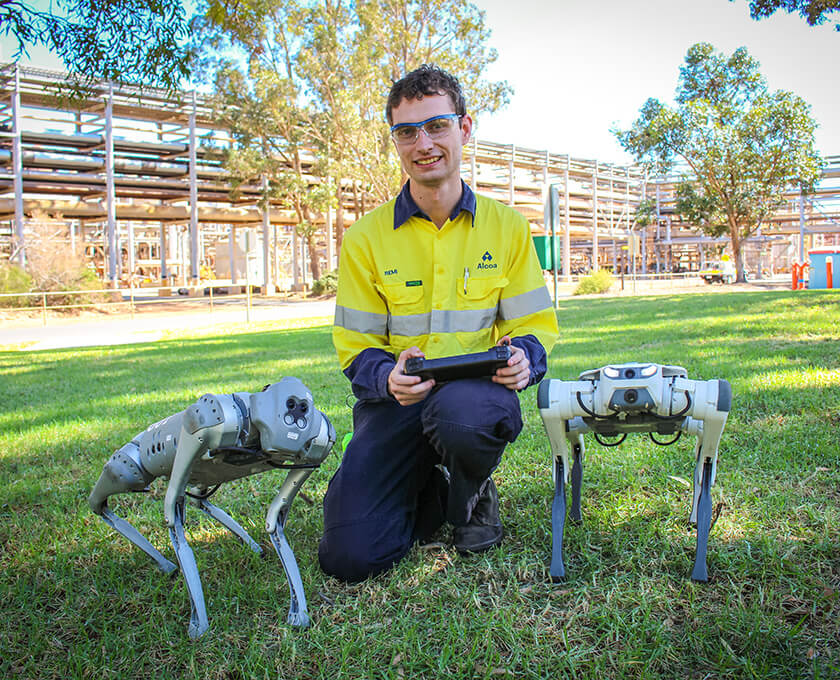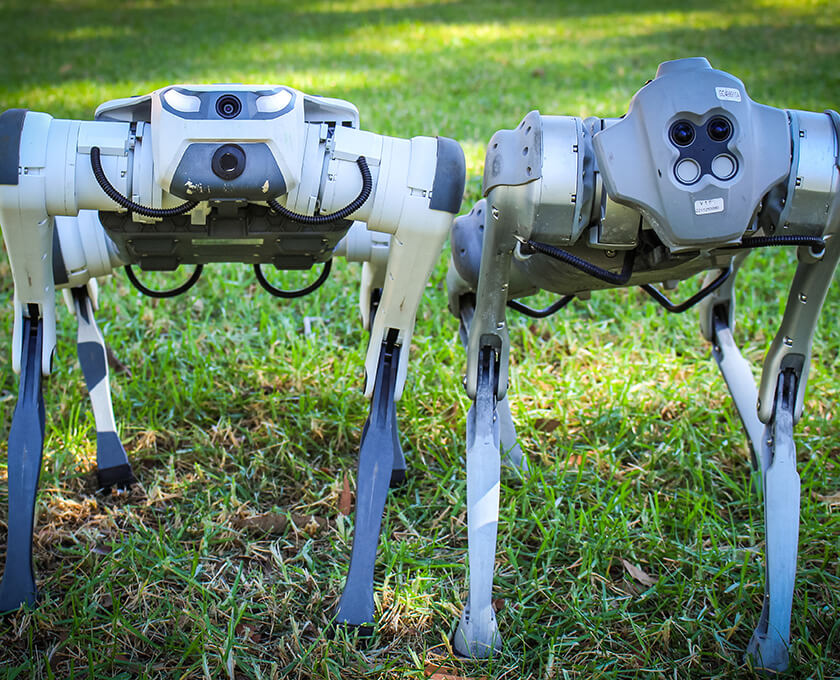April 19, 2024
Reducing risks with robot paws for safety

Robotic dogs may soon be employed to complete jobs that are monotonous or may expose workers to risks or unpleasant environments at Alcoa’s mining, refining and smelting operations thanks to work being undertaken by the company’s Information Technology and Automation Solutions team.
According to Alcoa Automation and Robotics Engineer Remi Hart, who is based in Western Australia but works with teams globally, automated solutions have been trialled in an effort to improve the safety, accuracy and efficiency of carrying out repetitive and higher risk tasks.
“We’re finding solutions to problems that our sites nominate because they might pose safety issues or be repetitive such as pipe, conveyer and pump inspections, confined space entry work, and in maintenance and repair inspections of mobile equipment,” Remi said.
“At the moment we’re undertaking testing to understand what the robot dogs are fully capable of…can a robot dog climb up these stairs? Can it go over steps and under objects?”
Conveyer rollers are one area targeted for potential robotic inspection solutions. Remi says inspections can be difficult due to access limitations, not to mention the sheer number of rollers that need to be inspected on a regular basis.
As an example, with some 40,000 rollers bearing the load of 18km of conveyer transporting ore from the Willowdale Bauxite Mine to the Wagerup Alumina Refinery alone, Remi says visual inspections are vital to inform maintenance requirements. But requiring people to carry out the task is labour intensive and relies on individuals’ knowledge.
“Moving to an automated solution means we can carry out those inspections in a more repeatable, quantitative manner,” he said.
Likewise, Remi explains that the task of inspecting pump seals on a weekly basis, which is vital to prevent leaks and spills but requires significant time and resources, has been identified as one that could be more accurately carried out by the robot dogs.
“We’ve really just started the program and we’re learning more as we go,” Remi said. “As well as testing robot dogs’ mobility, we have other challenges to overcome such as dealing with magnetic fields in pot rooms at the smelters.”

Two prototype robotic dogs are currently undertaking trials at Alcoa’s Huntly Bauxite Mine, Wagerup Alumina Refinery and Portland Aluminium Smelter in Australia. While early testing is designed to identify accessibility and mobility requirements, the ultimate objective is to implement various degrees of automation. That ranges from remote operation, allowing users to control the dogs from a safe distance with video feeds for tasks such as inspecting undercarriages of dozers and haul trucks, through to fully autonomous, AI driven technology to carry out higher risk tasks such as confined space and hazardous area inspections.
Although it will still be some time before final solutions can be rolled out, feedback from the workforce has been highly positive.
“People are surprised how far technology has progressed and are asking what the robot dogs can do and what tasks they could take on,” Remi said.